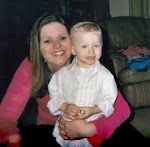Friday, April 30, 2010
Claustrophobia
My clinical site, also my employer, has to turn away numerous patients due to them being claustrophobic or too large. We only have one magnet and it is a short bore Philips MRI, but for the true claustrophobic it doesn't matter how short the bore is. This summer we are finally getting an open MRI and are so excited about it, hopefully it will increase our volumes and productivity tremendously and will be very convenient for our patients. One thing I thought was above and beyond when I started at Lourdes was what the MRI techs do to help a person get through their exam in the closed MRI when they are claustrophobic. It is amazing how much it helps calm a person just to know someone is right there with them. The techs will stand in the magnet room with a patient either holding their hand or just patting them on the leg every now and then just to let them know they are not alone. It relieves some patients claustrophobia just to know that someone is there to get them out right when they need out and that they will be able to speak to someone at any time. I thought this was very compassionate of the techs by making sure they got the test they needed without rescheduling the exam or delaying the patients treatment.
Thursday, April 22, 2010
Baker's Cyst

This patient had a large palpable area on the back of his knee that you really didn't even have to palpate to know it was there. You could see it sticking out the back of his knee. The radiologist read this as a large Baker's cyst. We get patients all the time with Baker's cysts but I thought this one would be something different because of the size of it(even though I could see that it was fluid filled), but guess I was wrong. This patient also had osteoarthritic changes and a tear of the posterior horn of the medial meniscus. I posted a picture of the Baker's cyst so you can see how large it was on the images.
Syrinx and Chiari Malformation

This sagittal image is from a MRI of the cervical spine with and without contrast. In this pre contrast T2 image you can see a couple abnormalities, one being a Arnold-Chiari malformation. A Arnold-Chiari malformation is a downward displacement of the cerebellum through the foramen magnum. Another abnormality is that the patient has a large cervical syrinx that extended all the way to the margin of the field of view. We later found out the syrinx was the entire length of the patients spinal cord. A syrinx is a rare, fluid-filled neuroglial cavity within the spinal cord or brain stem. I have seen a syrinx on a patient before but it was only the length of one cervical vertebrea so this one definately stands out to me. The patient's symptom was occipital headaches. I wish I could follow-up on patients and see what kind of treatment is used and if it helps for different pathologies I see! And the image I posted isn't the best, it is a picture of the computer screen with my digital camera so not the best quality but you can see the pathologies I'm mentioning.
Subscribe to:
Comments (Atom)
.jpg)